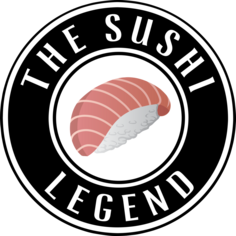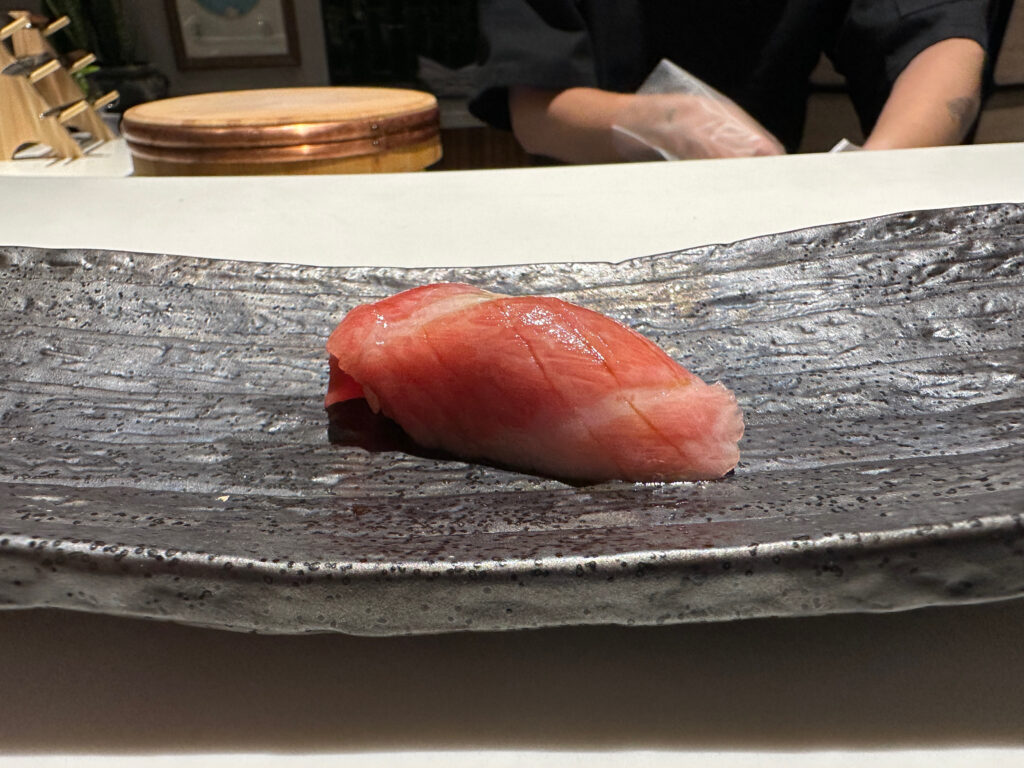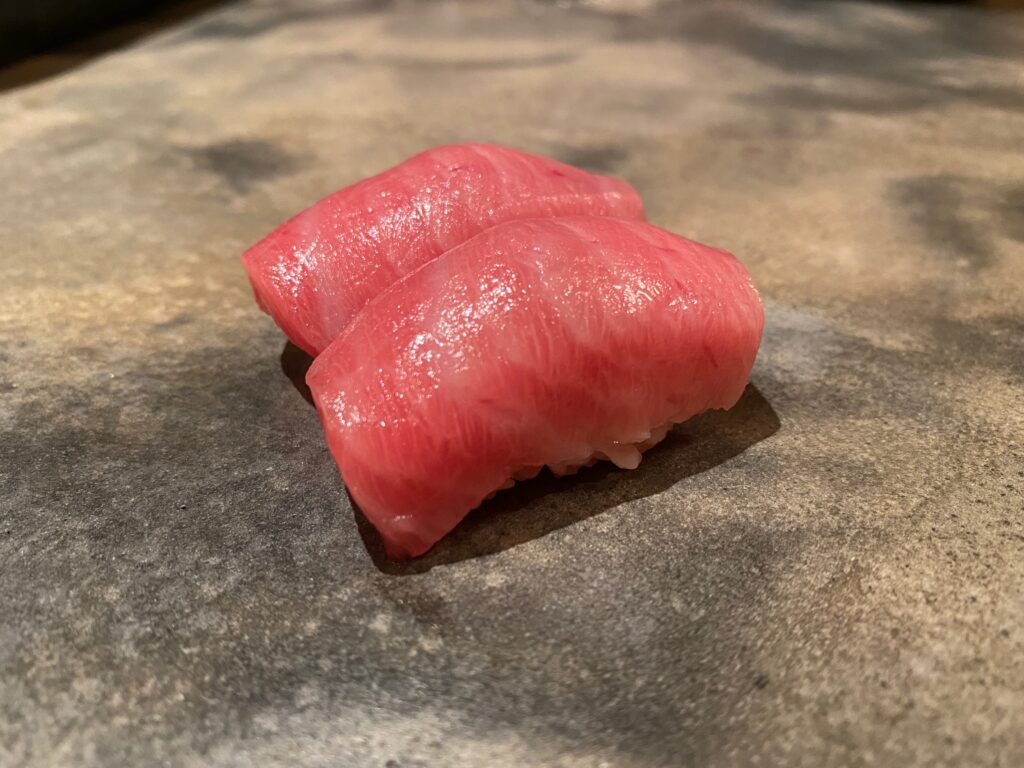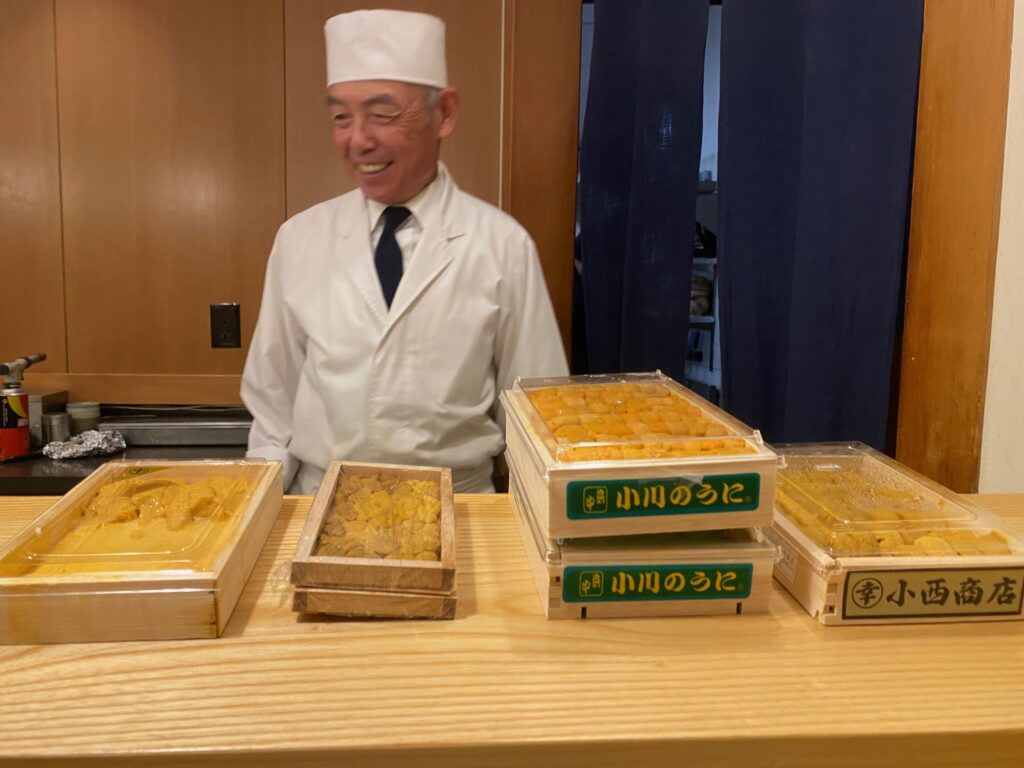Editor note: I also visited Sushi Sho about 4 months after this first visit. You can read that review here.
“If you take sushi away from me, I have nothing. It’s my identity – the reason why I’m alive, why I was born”
-Keiji Nakazawa in Andrea Fazzari’s Sushi Shokunin book. Ironically, I’m fairly sure I said the same thing to my mother in 1996 about beanie babies.
If it feels like you’ve been waiting for this review forever, that’s because you basically have
I first wrote about whispers that Sushi Sho – the sushiya helmed by legendary sushi shokunin Keiji Nakazawa, so well-regarded it spawned multiple locations and even more tributary outposts – yes, that Sushi Sho – was coming to New York City all the way back in 2021.
At the time, Nakazawa-san was helming the Sushi Sho Hawaii at the Ritz Carlton Waikiki, the sushiya he opened in 2017. His excursion to Hawaii was one of the first instances of a renowned Itamae opening overseas, a trend that has ignited like those blowtorches shitty sushiya use, especially in New York with Yoshino and forthcoming spots like Mitani.
But after 3 years of exhaustive site selection, renovations, permitting and menu refinement, Nakazawa-san and his team opened Sushi Sho New York City on March 1, 2024.
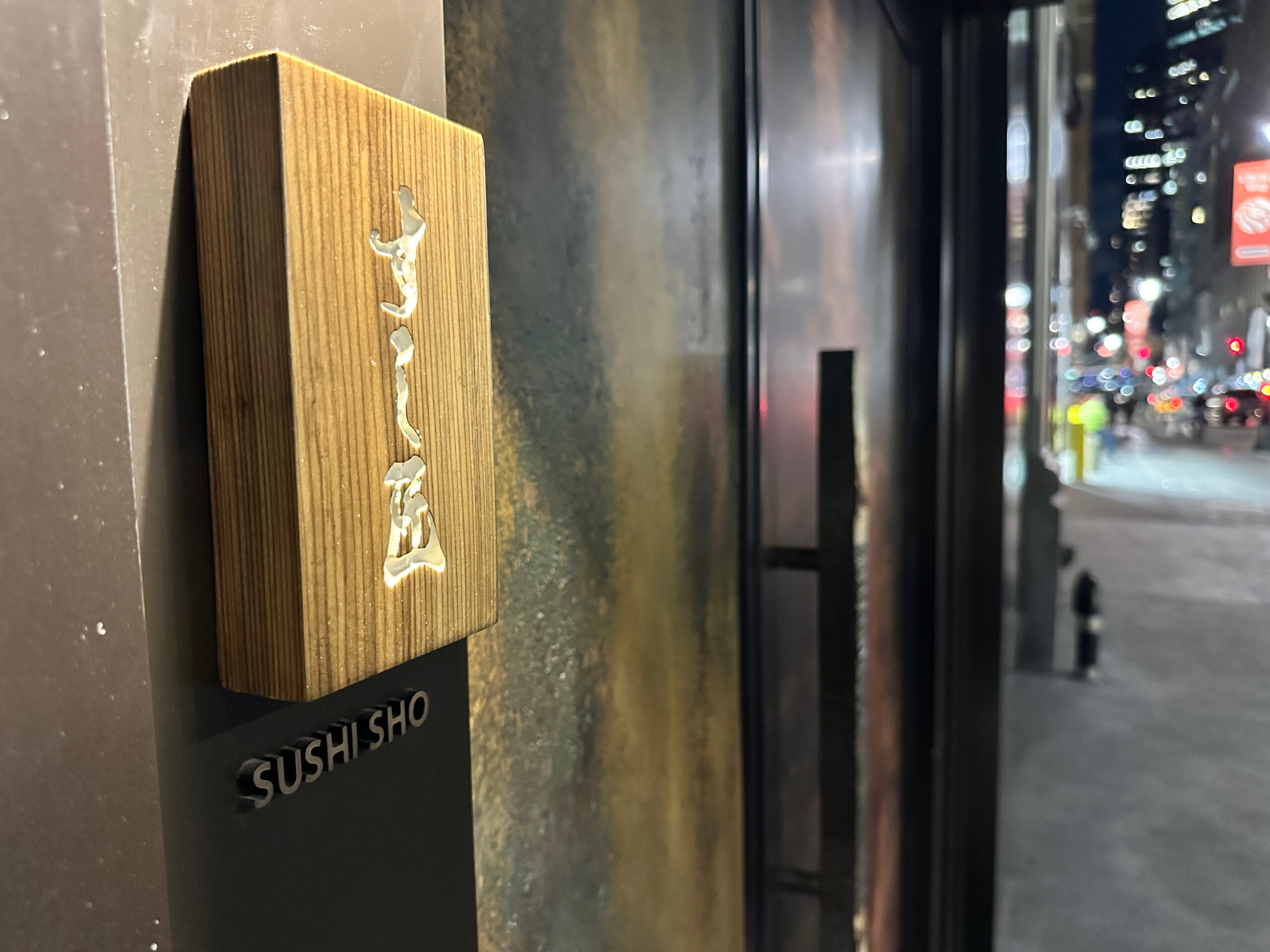
Outside Sushi Sho
Background on Nakazawa-san
There are Sushi Legends and then there are Sushi LEGENDS.
Keiji Nakazawa almost assuredly falls into the latter category.
He started Sushi Sho in Yotsuya (neighborhood in Tokyo – go visit) 30+ years ago, and has become a revered figure in the community since.
To wit, in sushi culture, it is sometimes customary for apprentices that open their own sushiya to name their shops in tribute. An article from Hana Hou magazine in 2017 (since removed the internet?) estimated that 30 such sushiya had been opened, including Tokyo’s Sushisho Masa, which I visited and reviewed on my honeymoon back in 2016.
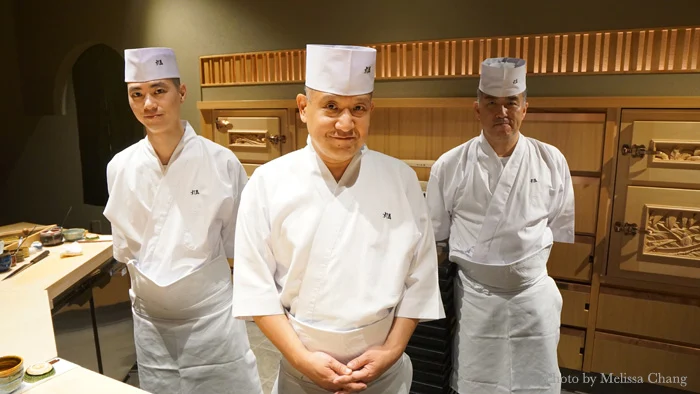
Nakazawa-san is centre. Photo cred to Honolulu Magazine (not many pictures from me here, for reasons I’ll explain shortly)
He resolutely focuses on Edomae-style sushi
If you’re unfamiliar, Edomae generally means crafting sushi with Japanese ingredients using traditional techniques. For instance, aging which is a staple of Nakazawa-san’s repertoire.
As Kikuo Shimizu wrote in his seminal book, Edomae Sushi, some believe that Edomae requires ingredients to be caught from Tokyo Bay itself. But others expand the definition to include an expert applying traditional techniques to local ingredients. In Hawaii, Nakazawa famously served Opah and Moi (unfortunately nothing from the Hudson River was on our menu).
But if you’re expecting gold leaf, caviar or blowtorches – none of which were around in 19th century Tokyo – you’ll be disappointed.
So here I sit at 2:14am EST writing this review like some sportswriter on deadline
There’s not a single review of Sushi Sho right now on the internet. I’m not just talking about newspapers or “blogs that may or may not steal my content” like Eater, either. Yelp, Google, TripAdvisor, Foursquare (for anyone under 30, this was like the written version of Vine, which was, uh, never mind).
So did I rush to get this review to inform the masses? Yes.
Did I also rush to try and get the jump on that sweet, gelatinous, SEO? Also yes.
By the way, that might actually be a bad strategy because the SEO is what’s causing this epidemic of people emailing me thinking I’m a sushiya. No, I do not have a gift certificate for your kid’s public school silent auction.
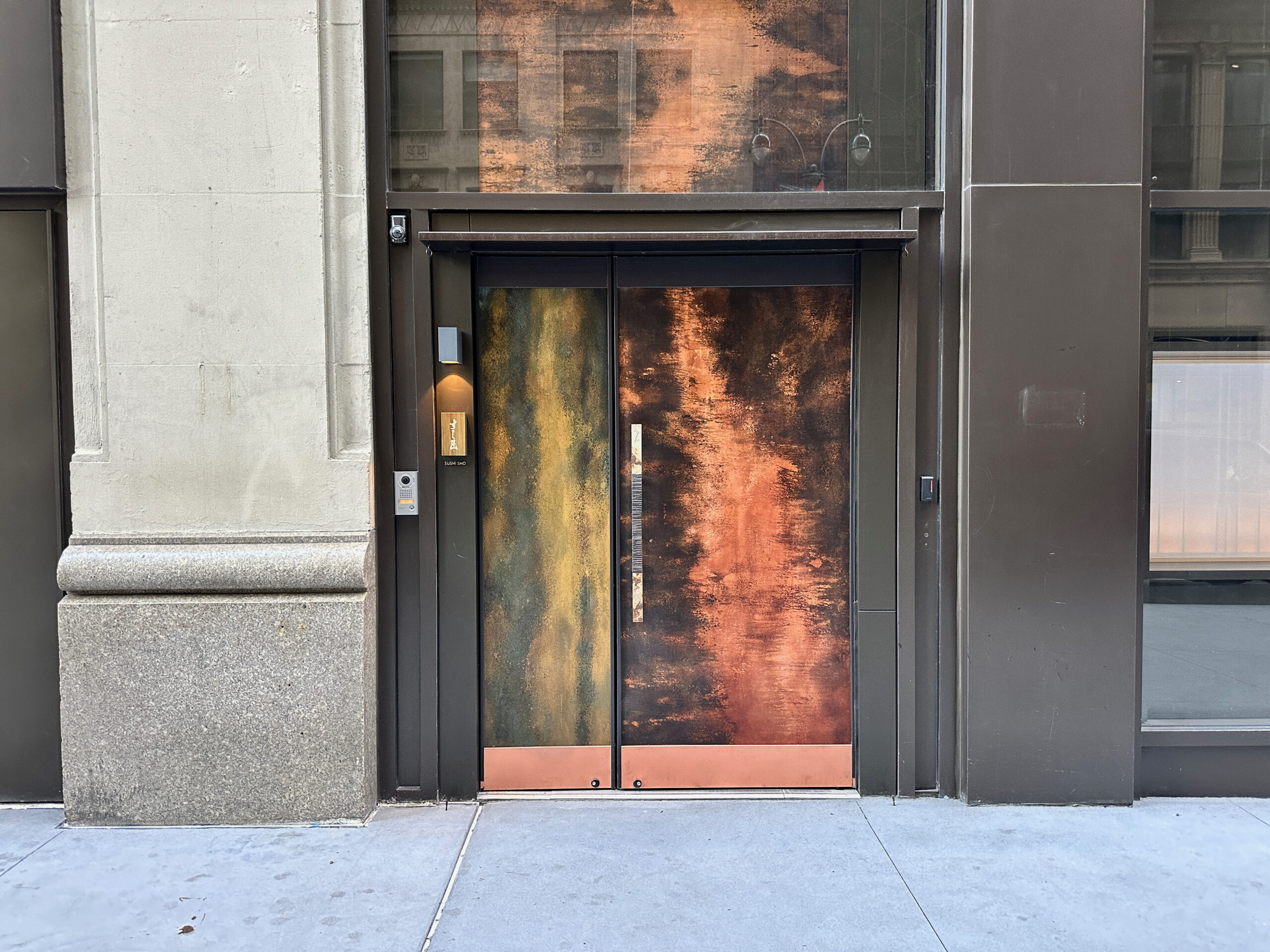
This is the door you’re looking for
I did get something very, very wrong
When I wrote my “Sushi Sho Is Opening, Tell All Your Friends That Care Far Less Than You Do” article, I said the following:
“But then again, it was supposed to come in 2022 and 2023 so the official position of this blog is: until I am sitting at a counter surrounded by 8 finance bros and a food reviewer with a full-frame camera, I’m not believing any of fit.”
– me 4 years ago
I thought of that very well-written quote because it only came partially true…
And I hope you’re sitting down for this news.
Sushi Sho doesn’t allow videos or pictures.
I know that’s tough to swallow as you sit here reading a blog that achieved notoriety (among my family) by including visual aids.
“How am I supposed to know if the meal looks good?”
Well, theoretically, as someone who writes for a living (of $0), I should be able to do this little trick called “describing” by using something called “words”. So I’m going to try that, but no promises it will be successful.
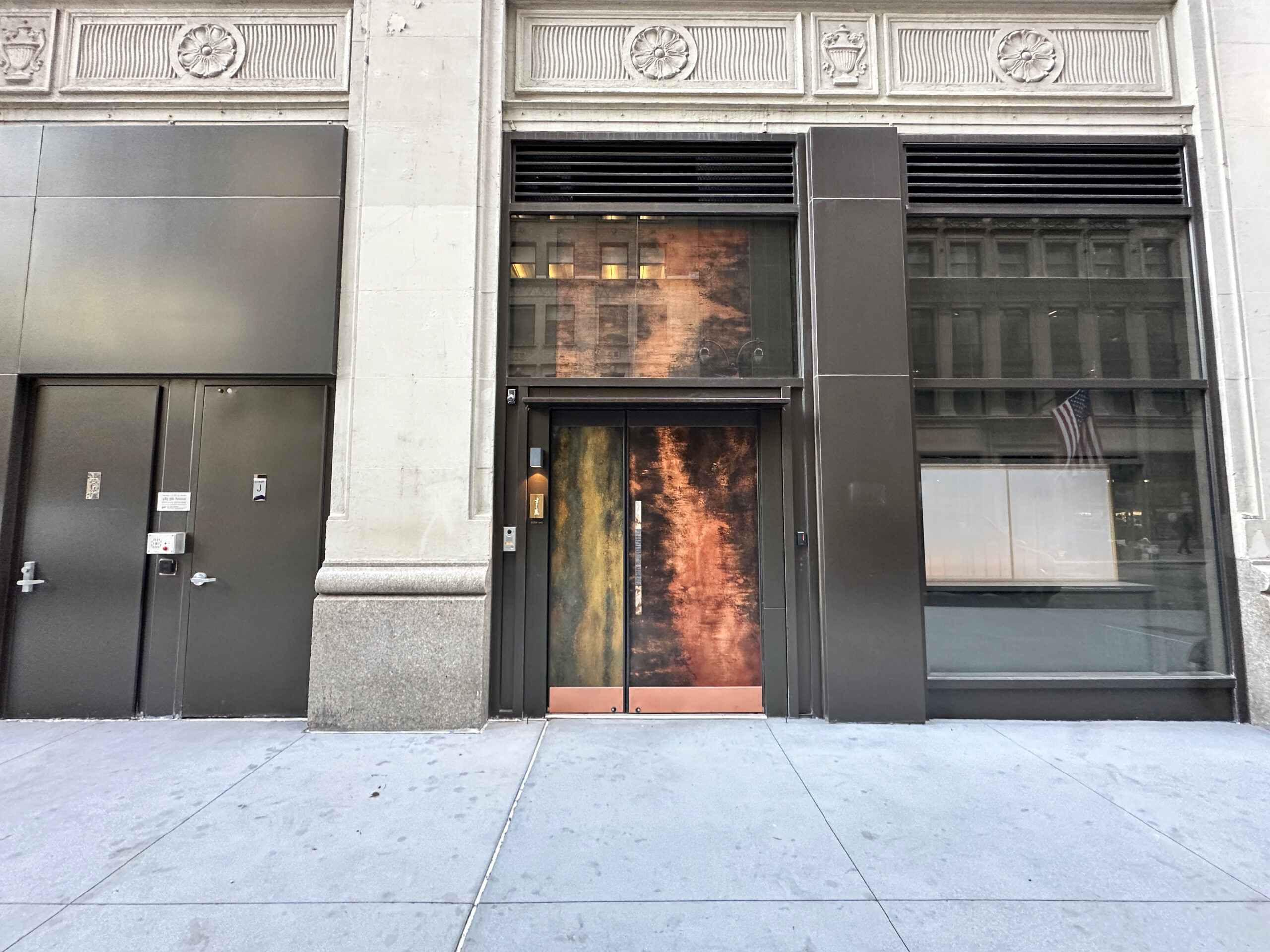
Here is another picture of the door
Can I tell you a secret, though?
I actually welcomed that rule. Look, I get why pictures are necessary. These meals are expensive, and pictures are not just a memento, but a helpful tool for potential customers and restaurants to market themselves for free. I don’t abhor the practice; that would make me a hypocrite, and the only thing I hate more than hypocrites are people who don’t put the supplemental weight stacks back at the gym.
But, the truth is that it’s undeniably distracting, and I’m sure it’s the same for other customers and the staff. At Sushi Sho, the rule allowed me to relax, enjoy the meal and chat with my dining partner about topics like “what’s the best Doula?” (don’t ask).
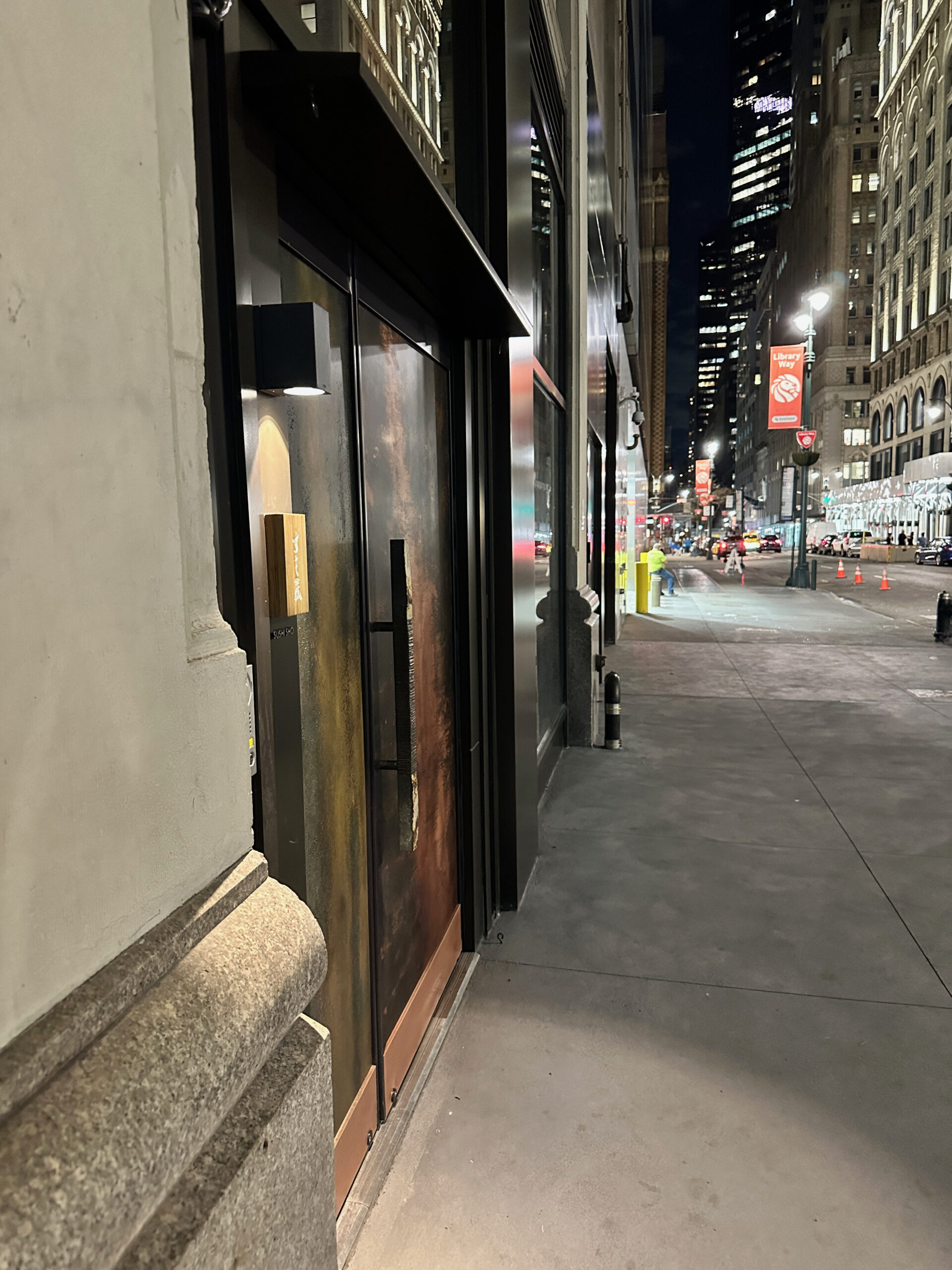
Another angle of the door
Sushi Sho has one seating a night and good luck getting a reservation
That seating is at 6:00pm, and reservations are challenging::
- Reservations are booked for every available date (through the end of May)
- The Sushi Sho team does not know when June will be released
- There is a waiting list, but it’s already 500 people deep
Arriving through the non-descript door (it’s right next to The Andaz), a host will escort you into the bar area where you can grab a drink before your party arrives. They’ll provide you a small of Oolong Tea, which should be a welcome opener once the summer arrives.
At 6:00pm, you’ll be escorted into the main room, which might as well be a theatre. Guests of Sushi Sho in Hawaii will recognize a few things; the decorative artwork on the ceiling, the engraving behind the counter, the very open concept, and the incredible u-shaped counter.
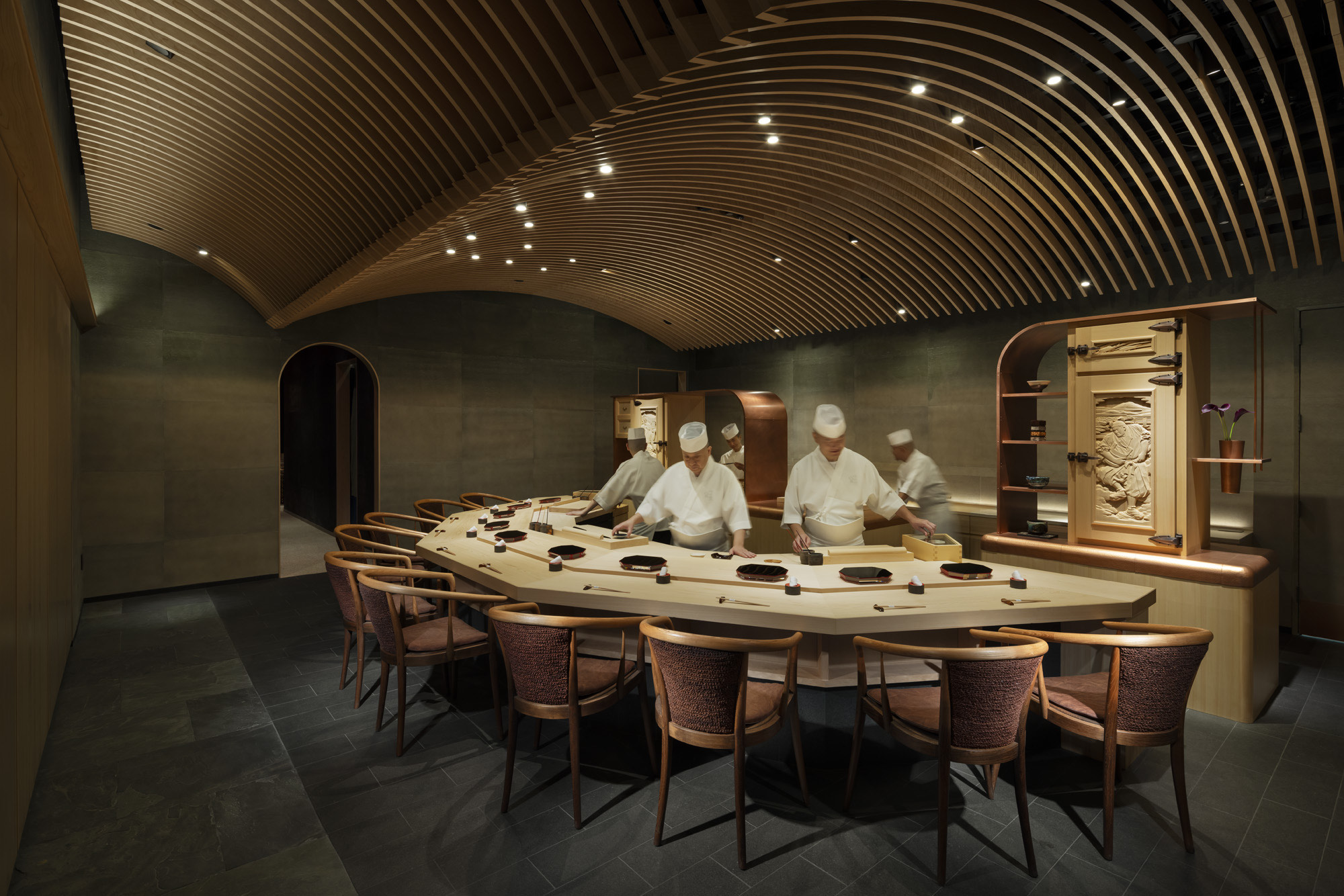
Inside Sushi Sho NYC with Nakazawa-san in the middle – note the engravings on the back which are two ancestors of sushi (including Hanaya Yohei)
Here’s a free tip on where to sit
We sat in the two seats right in the middle, and that enhanced the experience. I know – i’s hard to enough to get reservations here, never mind pick your spot. But not all 10 customers will have read this blog like you smart legends *taps brain*.
1,500 words later, let’s talk about the Omakase itself
Unlike many other NYC sushiya in this stratosphere, there is no procession of heavier full-plate courses before the nigiri starts. Just one course, a cherrystone clam, and then right into Kodai (baby red-snapper) topped with egg yolk vinegar oboro, a classic made with egg yolks, whole eggs, vinegar and sugar.
If you’ve eaten with Nakazawa-san before, I’ve got some good news: he’s still as in-tune with seasonality as ever.
Take for example, the simmered squid stuffed with shari (picture from Sushi Sho Hawaii below). Out is the rice. In are creamy squid eggs, in season at the moment, a take on a classic dish called Komochi Ika, and a reflection on Nakazawa’s willingness to update the menu for available ingredients.
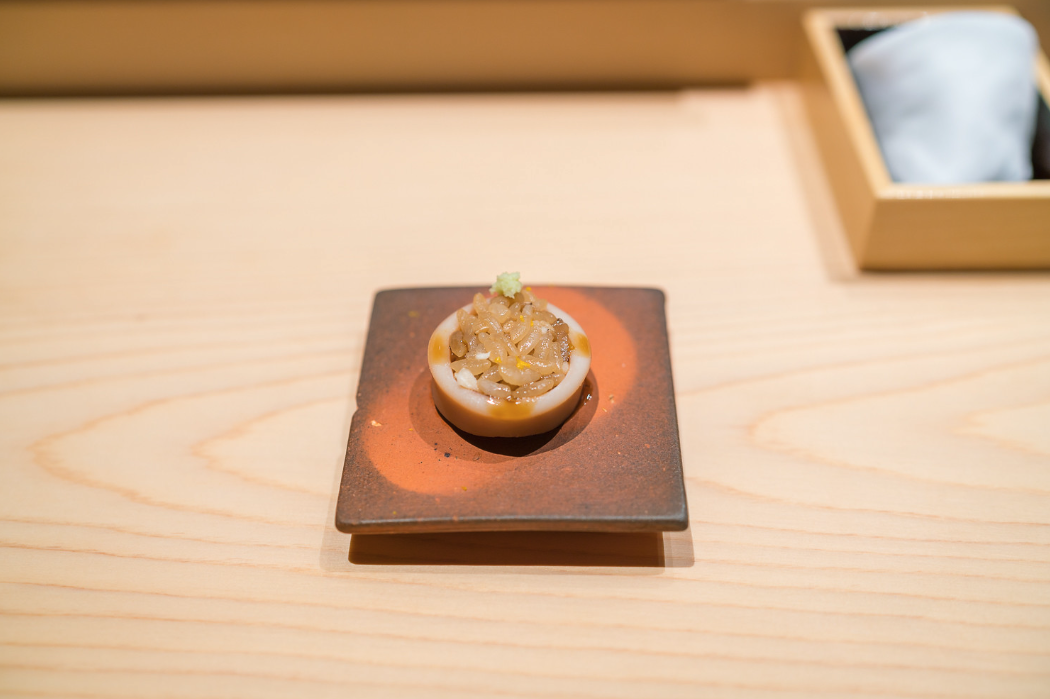
This dish from Sushi Sho Hawaii has been modified to include squid eggs instead of shari. Photo cred “Dale” on Flickr.
“I’m not going to run through every course – you’ll be bored to death – but I will share some highlights that reinforce why this is a special experience”
– Me
First, if you’re an aging nerd, this is the place for you
Hmm, that came out wrong. I didn’t mean an aging nerd (like Bill Nye) – I meant if you’re a nerd for the aging process (like Benjamin Button).
Many of the courses at this Omakase feature some aging, some unique preservation process, or both.
To wit, the fourth course is Zuke, akami marinated for four days. Serving Zuke is not uncommon, but it sets the stage for what’s to come.
Like, for instance, the seventh course; Sawara served Matsumaezuke style
Sawara (Spanish Mackerel) is preserved by Konbu (kelp), dried squid and a few other ingredients, a flavourful contrast that my dining partner raved over. Matsumaezuke itself is a traditional dish from Hokkaido, and it’s incorporated smartly here.
The eleventh course featured special delicacies that may excite some of you
After proudly showing of aged Kazunoko (dried herring roe) and Karasumi (dried mullet roe), Nakazawa-san serves each sliced. Karasumi is one of three tenka no sanmai chinmi – the three delicacies of the Edo period (the other two are Konowata and Uni). Kazunoko is also special, expensive to produce and features a sharp taste that I always find delicious when prepared properly.
I have to mention the Izushi in Course 14
Centuries before the Edo period, sushi started as a means to preserve food using fermented rice. The longer the fermentation, the more the rice turns into a goo. At some point in the middle ages, rice koji and vegetables were added to the fermented rice and fish, to create something called Izushi. Sushi Sho’s 14th course was Nishin (Herring) Izushi, a unique course that I enjoyed immensely.
The fermented rice makes a return in course 18 with smoked Takuan (pickled daikon).
By the way – this science is way beyond my brain. I gave up biology in grade 10 thanks to the worst teacher on planet earth – but if you’re curious, pick up The Art and Science of Sushi by Jun Takahashi.
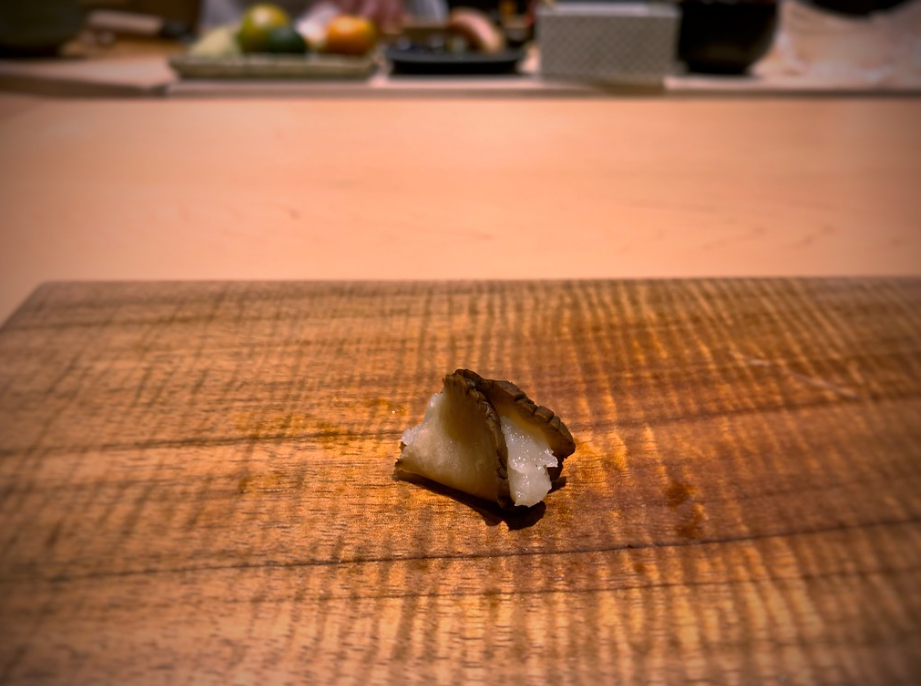
This picture from Sushi Sho Waikiki is similar to our course 18 (photo cred to T. Tseng on flickr).
The 19th course, Uni Kobujime, was also a hit
Another first (and please, I beg, do not email me to let me know that random sushiya X did it first). First, for me. Uni Kobujime (preserved in kelp). Kobujime is typical with hikarimono, but the strong taste I adore paired very well with the high-quality Murasaki Uni.
Anago replaced by Gindara was a nod to our “region”
This isn’t pulling a striped bass from the Hudson River, but it is something. The Gindara was from Santa Barbara, and it’s served with nitsume right before dessert. In that respect, it Wally Pipp’s the eel family (sorry Anago and Unagi), who normally occupy this spot in the lineup.
Here’s the full Omakase from my visit, though the menu changes nightly as it should:
- Simmered Cherrystone clam and oyster with clam chowder sauce | small dish
- Kodai (baby red snapper) with (vinegered egg) | nigiri
- Komochi-ika (simmered squid stuffed with squid egg) | small dish
- Zuke (marinated tuna) for four days | nigiri
- Iwashi (vinegared sardine wrapped local vegetables) | makizushi (style)
- “sharisotto” – lobster risotto using shari | small dish
- Sawara (spanish mackerel) matsumaezuke style | nigiri
- Pickled local cucumbers on dried Bonito | small dish
- Tsubugai | Sashimi (style)
- Sujiko marinated in miso tofu | nigiri
- Karasumi (dried mullet roe) with Kazunuko (herring roe) | sashimi
- 10-day Aged Chu Toro – Chiagishi (chu toro near the red muscle beside the spine) | nigiri
- Bettara Zuke
- Nishin Izushi (see above) | small dish
- Ankimo two ways | sashimi (style)
- Pickled cherry tomato | small dish
- Kegani with Vinegared Egg Yolk Oboro | Nigiri
- Takuan – Smoked pickled daikon with fermented shari | Small dish
- Murasaki Uni kobujime | nigiri
- Gindara (black cod from Santa Barbara) | nigiri
- Dried bonito and kombu kelp dashi | Sipping glass
- Tamago Kansai and Tokyo style | makizushi
- Green Tea
- Kuzukiri – traditional dessert from Kyoto. Kudzu noodles, served in ice, with Kuromitsu (Japanese black sugar syrup)
- Salt Milk Ice Cream with leftover Kuromitsu
Yes, they provide a menu
And good thing they do. Fair warning that the menu is not all encompassing, but it’s better than the alternative (me attempting to furiously notes app what I’m eating). And yet, I’m still sitting here literally 2 hours after the meal trying to recall details. It seems that one time I blacked out on Appleton’s Dark Rum in University has finally caught up to me.
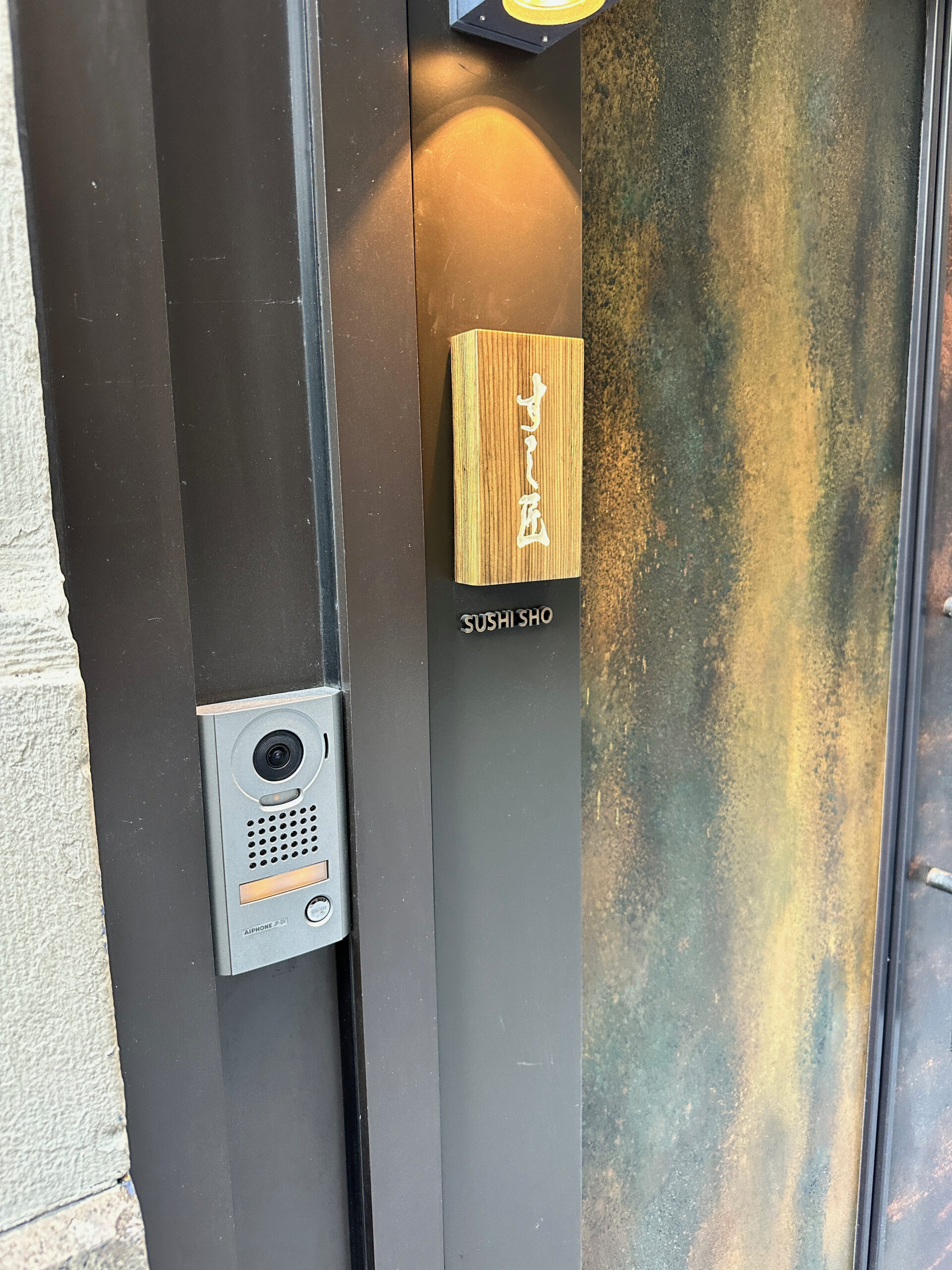
The door has a buzzer to get inside
A word on the Neta
One criticism of other high-end sushiya in New York City – which I wholeheartedly agree with – is the lack of variety in their nigirizushi. No such concern here. That said, the Omakase itself only has seven nigiri (out of 24 courses). If you’re a nigiri person, like I am, I suggest ordering more as part of the Okonomi section of the meal.
Ah yes: Sushi Sho offers Okonomi after for supplementation
While Omakase – essentially leaving it up to the Itamae – is a well known phrase around these parts, Okonomi, essentially “a la carte”, is not. At Sushi Sho, after the Omakase is concluded, an Okonomi menu is presented and Nakazawa-san presents each option to the entire room.
Every course is on the smaller side. That means that although the Sushi Sho Omakase was a robust 25 courses, you’ll likely have room for a few (or many?) Okonomi add-ons. Here’s the full list the night I went.
Okonomi options (each is priced at $35)
Nigirizushi
- Aori Ika and Sumi Ika mix
- Karei (left-eyed flounder)
- Kannuki (big needlefish) – Sayori that is bigger is referred to as this
- Sakura Masa (cherry trout cured with cherry blossom leaves)
- Hotategai (scallop)
- Kobashira (aoyagi – clam muscle)
- Hamaguri (common orient clam, yes that’s really the name)
- Kinmedai (Goldeneye snapper)
- Kinmedai skin
- Chu Toro
- Shimofuri O Toro (you’ll likely hear two “types” of O Toro – Shimofuri – marbled flesh – and Jabara – bellows belly (more sinew))
- Ohagi
- Didn’t catch the last option – referred to on menu as “Aged Toro”, which could be mostly anything.
Other
- Apple Kanpyo makizushi
- Battera (not exactly nigiri)
- Oyster ruibe
- Chawanmushi with awabi
- Uni marinated in Shaoxing wine and Botan Ebi
We ordered the Ohagi (minced with takuan), Aori Ika/Sumi Ika, and Hamaguri. All fantastic, but the Hamaguri – in season at the moment, and requiring Edomae techniques – is special enough that it’s worth an order if available.
I’ve heard some rumours that you need to spend $1,000 to do Sushi Sho properly and that is poppycock
The Omakase – again 25 smaller sized courses – is $400 including gratuity. Doing some basic math, you’d need to order 17 of the 18 Okonomi options to get to $1,000 slash pass the Masa line. All 18 would mean a 43 course meal for $1,030 dollars. Now, if any of you Legends do 42 or 43 courses, write me. You’re getting an instant induction into The Sushi Legend hall of fame (currently virtual, but working on a physical location at the abandoned husk of Sushiden).
Post-review edit: Some legends rightly point out that Sushi Sho in Yotsuya is renowned for the gazillion courses, and naturally I wrote – and forgot – that Sushisho Masa was the same. So I’m going to remove the auto-induction into the sushi hall of fame, but I will put you on the ballot.
Now, of course if you’re adding alcohol that changes the equation
And the Sushi Sho wine list seemed extensive (to these very amateur eyes). I counted seven different kinds of champagne, and many more kinds of Sake, including New York’s own Dassai Blue by the glass (I visited the Dassai Blue brewery here).
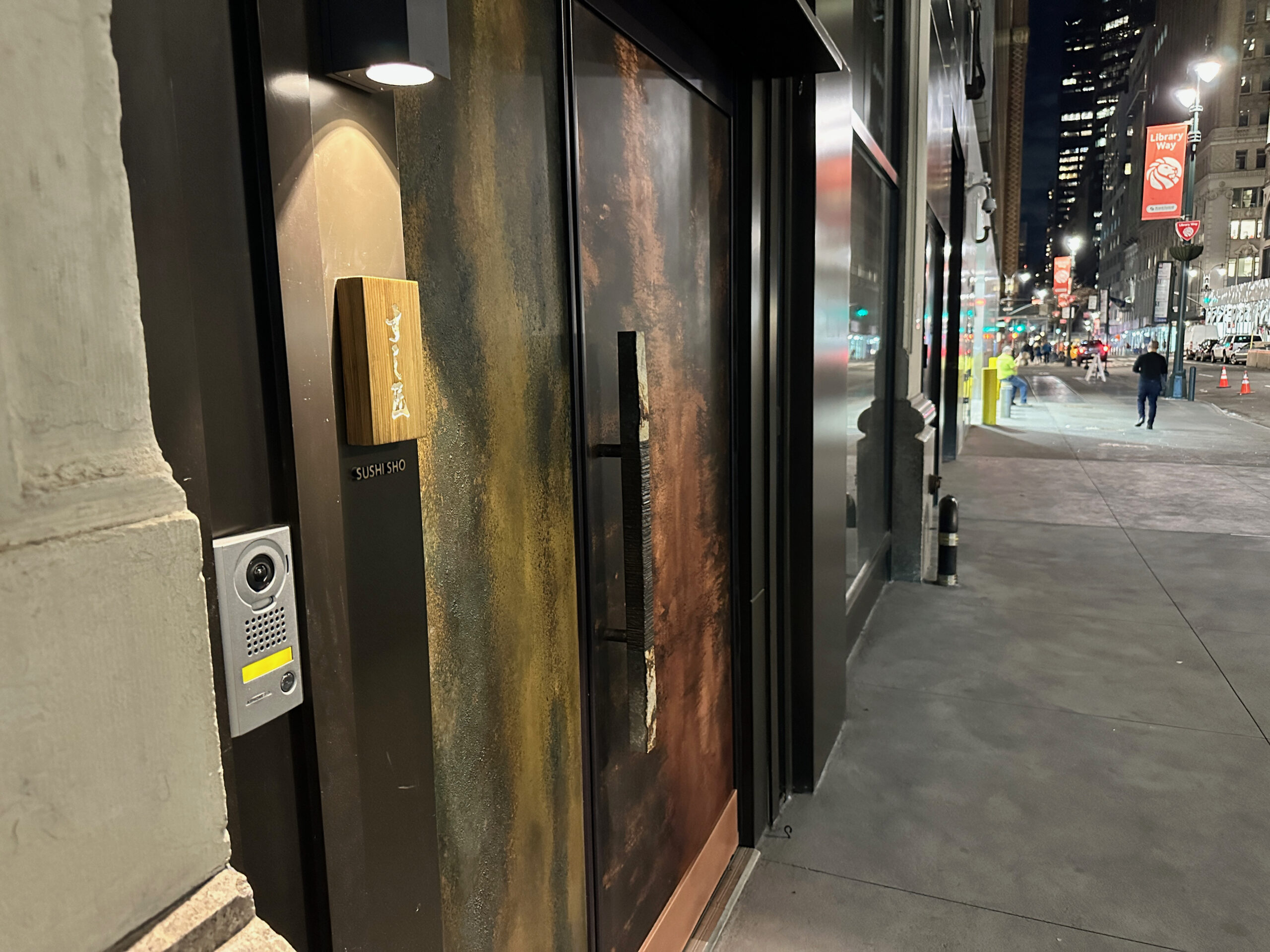
Door at night
I have to mention the service
There are 14 people that work at Sushi Sho, compared to 10 customers. Each course is presented at once – not everyone is served by Nakazawa-san, but he proudly announces the dish in Japanese. Then, one of 5 staff standing behind each twosome whisper translations if necessary and answer any questions.
It’s a well-oiled machine, even more impressive given the fact that – even though these are experienced operators – this location opened just two weeks ago.
Perhaps, it’s exhibit A why the 3 year wait was necessary.
So what’s the verdict? Is this New York City’s best sushiya?
Food is subjective. Just like art. For instance, I can’t tell you definitively that Margin Call is better than The Big Short, or Boiler Room is better than Wolf of Wall Street, but I can tell you that I enjoyed them much more and your brain is broken if you didn’t.
So while I’m not sure it’s the best, I can say it’s right up there as my favourite for all the reasons I listed above plus the fact I wrote 2,700 words this weekend instead of enjoying the unseasonably warm weather.
I hope the quality remains the same, because this is a truly special experience with an iconic Itamae.
Even with a billion option in this city’s sushi universe, Sushi Sho has its own gravitational pull. I’m sure the praise will come quickly.
Recommended.
